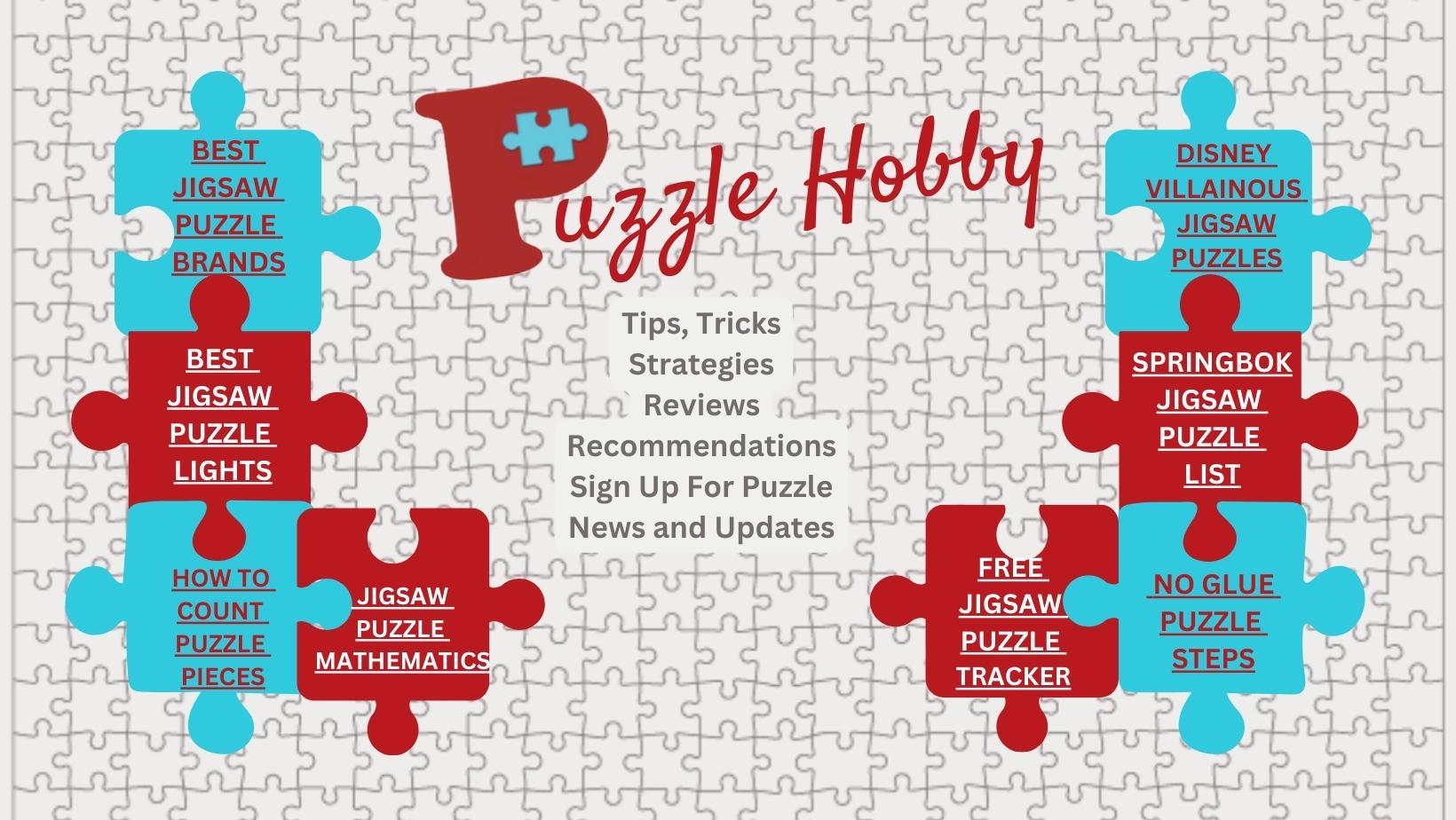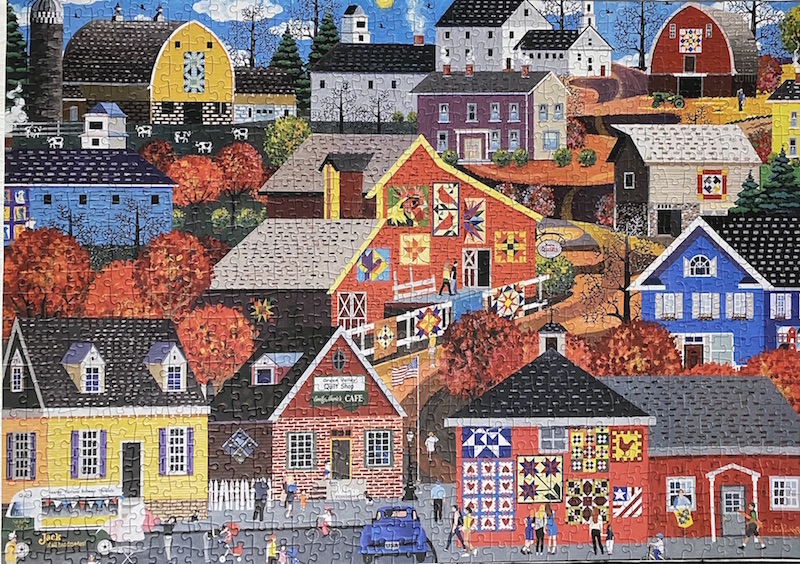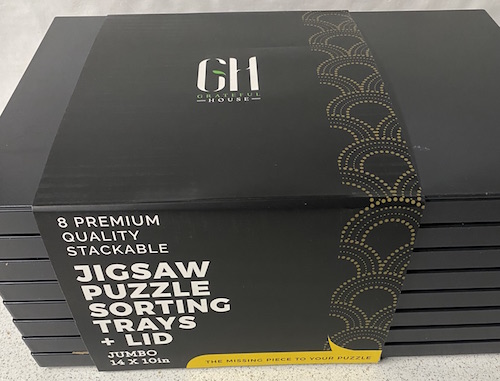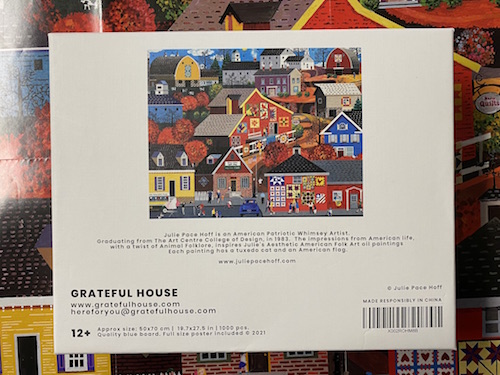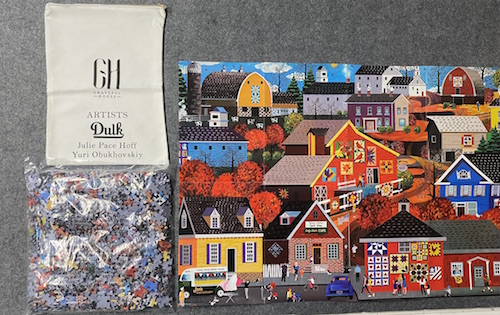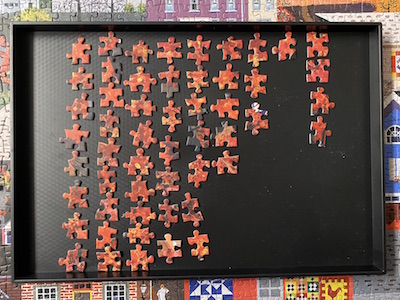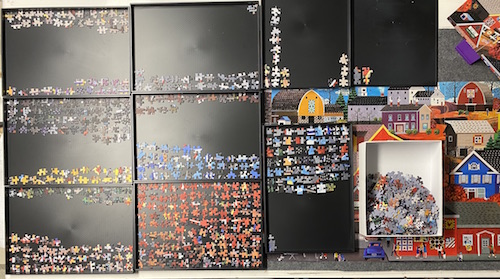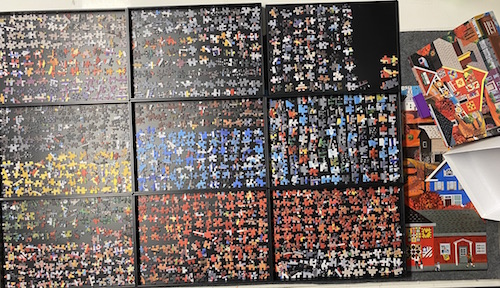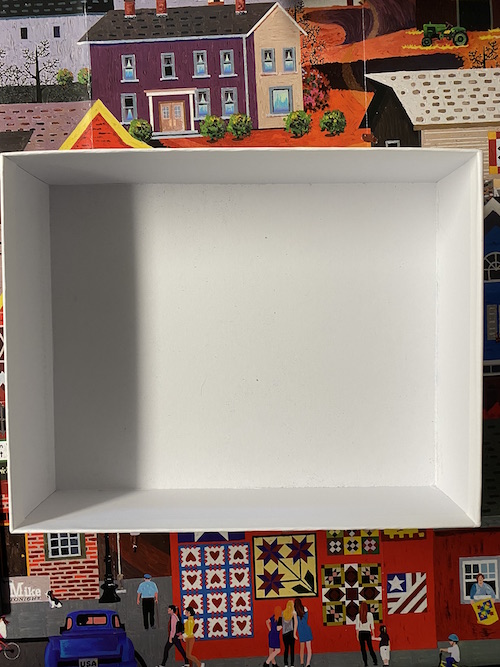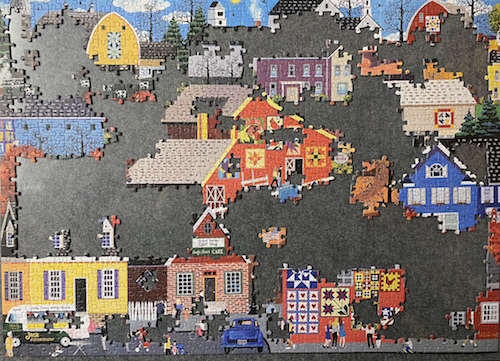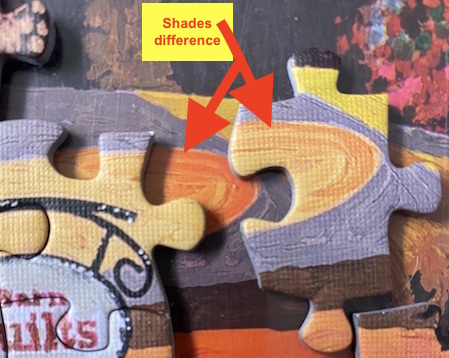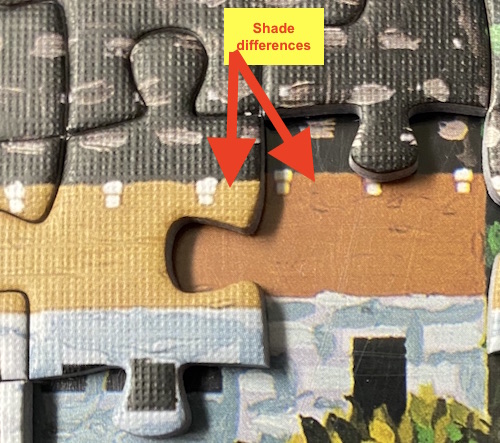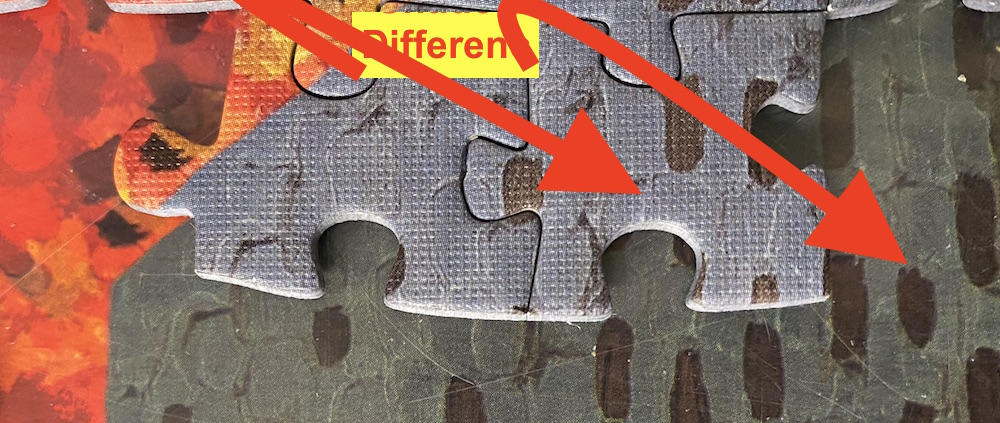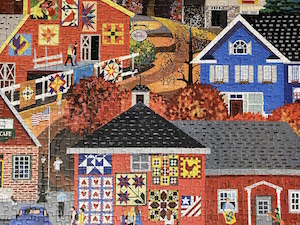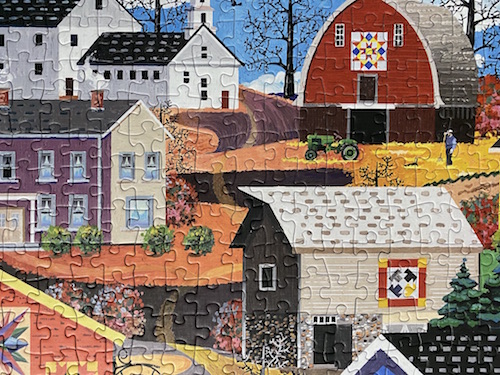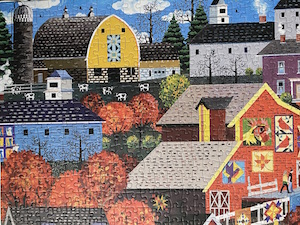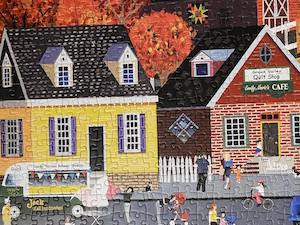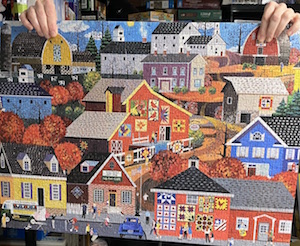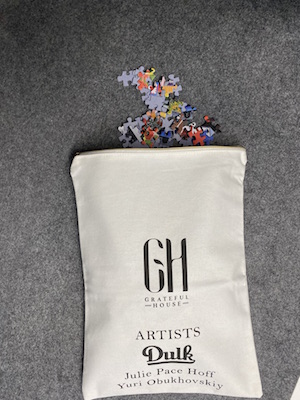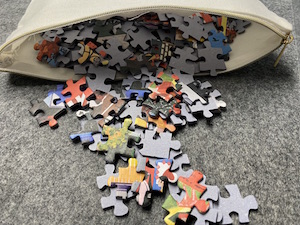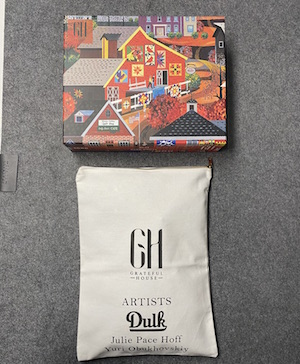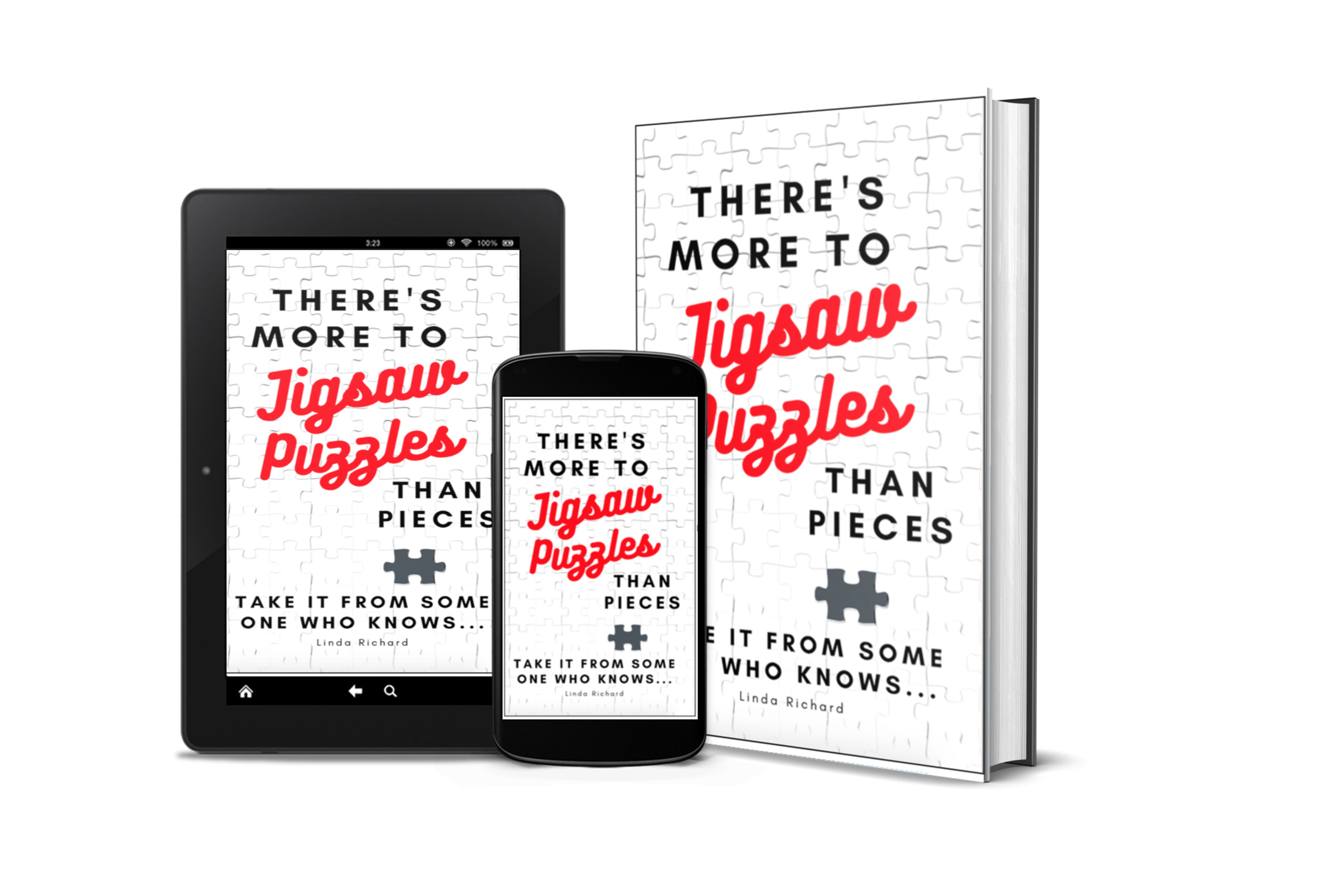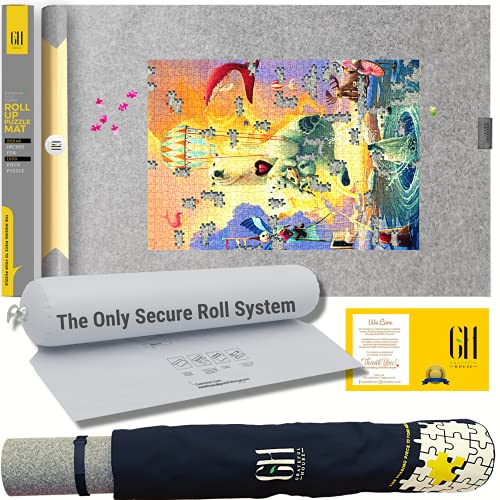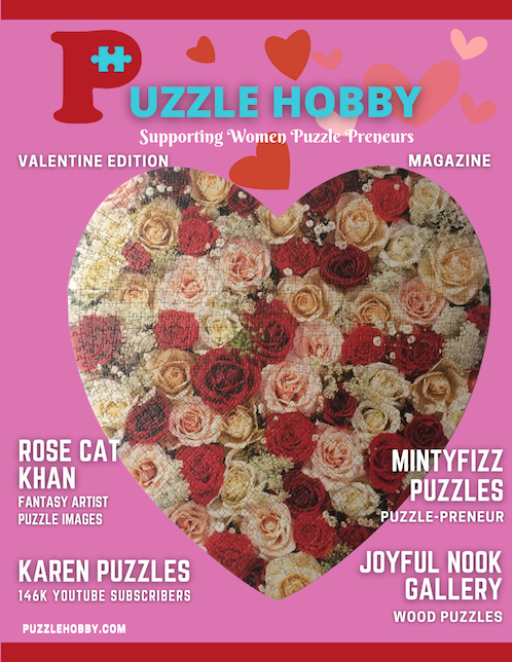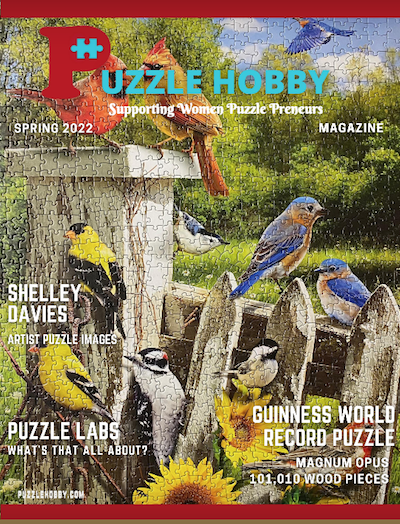 |
 |
- FAQ's 100 Questions
- Best Puzzle Brands
- Activities/Accessories
- Best Puzzle Lights
- Sponsored Reviews
- Sales l Giveaways
- Reap the Benefits
- Get Your Game On!
We are a participant in the Amazon Services LLC Associates Program, an affiliate advertising program designed to provide a means for us to earn fees by linking to Amazon.com and affiliated sites. Also, some of our posts contain other affiliate links and we will be compensated if you make a purchase after clicking on our links.


Barn Quilts Puzzle
The Barn Quilts puzzle is a very colorful, 1000 piece puzzle with a quality clear cut image and pieces. There are a few perks that comes with this company's product Read more about that below. Barn Quilts Puzzle Amazon link
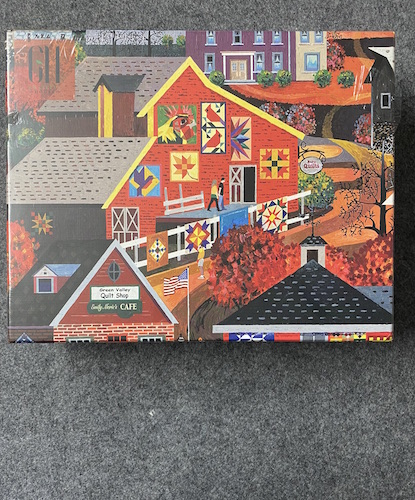
Brand: Grateful House Puzzle
Title: Barn Quilts Puzzle
Artist: Julie Pace Hoff
Pieces: 1000 size
Size: 19.7" x 27.5"
Barn Quilts Puzzle Review
|
Overall Experience: Great Cut Quality: Great Board Quality: Firm Shape Cut: Grid-like Image Quality: Good Hardest Area: Red trees Puzzle Dust? next to none |
Finish Quality: Smooth linen Box Quality: Great Sealed Pieces Inside Box: Yes Was this purchased new? no Price: Picked for review Recommend Level: High Time: 9 hours |
Barn Quilts Puzzle Assembly
|
You will see the Barn Quilts puzzle comes with a full size poster which means the poster is the same size as the assembly area. That tells you how much puzzling space you will need AND you have the option of assembling the puzzle pieces right on top of the poster. The puzzle pieces arrive in a sealed plastic bag however, upon completion, you can place the pieces into a quality cloth bag that zips closed - very secure! I must mention that I am using all Grateful House products with this review. Starting with the high quality grey mat. It lays out very flat and comes with the role-away function as you can see in the image to the right. You can view my demo in the video. Next, I am using the Grateful House sorting trays. I have tried and tested to see IF all the pieces could be laid out flat into the 8 trays. IF the lid is used to lay out the edge pieces, then yes, the other 8 trays will allow for the rest of the pieces to be laid out flat. See the images below. |
The above images share my sorting process. I laid out all the trays around the box of pieces. I took handfuls of pieces and laid each one face up and according to the colours or patterns I placed them onto the trays. I was quite pleased they all fit. The first image below to the left shows there is zero puzzle dust indicating a nice clean cut of the pieces.
 |
I only needed to work from the one tray that had the edge pieces, which meant I could hold it in my hand as it was not a large foam board like I have used in the past. The border was completed quickly enough by joining the blues at the top and the greys/people at the bottom. The other image below shows the large poster as compared to the actual border, puzzle box and trays on the grey mat. |
So my work in progress started with the blue sky/grey base at the bottom, then moved onto the yellow, purple, and darker blue buildings. I then moved towards working patterns. That left the big fiery red trees, the roads between the buildings and the rooftop patterns.
Barn Quilts Puzzle Comments
|
The following is an example of the 'colour-match' between the puzzle pieces and the poster. Often puzzlers will need to make this adjustment when assembling pieces according to the image. Notice the different colour matched between the pieces/poster below. |
The next section of images shares close up views of images, and you can see the clear image, the cut pattern and the quality of the pieces. These are important aspects of the puzzle and Grateful House passes a winner!
Grateful House Jigsaw Puzzles Quality Cut
Below is a nice close up of the ways some pieces tips fit nicely into each other. The different shapes to the tips helps with the grid-like cut, so they are not too similar. Maybe it also helps with the interlocking as you can see below, I have been able to lift the entire puzzle without the pieces falling apart.
About the Artist
|
The Artist of the Barn Quilts Puzzle, Julie Pace Hoff is an American Patriotic Whimsey Artist. Each of her paintings has a tuxedo cat and an American flag. Can you find those items? |
About Grateful House Products
I would be amiss if I did not share the added touch to Grateful House puzzles. The images below show the custom cloth bag for the puzzle with the name of the artist on the bag. The zipper is good quality and there is room for the pieces to fit neatly inside the bag.
Wait...there's more...
Inside the box of the jigsaw puzzle came the following details. There's a notice to contact them for missing or damaged pieces. There's a Scan code for a 3-month warranty, which also offers an entry for a free draw. Then the updated catalogue with their products and an invitation to join their Community in social media and Facebook Group. They've got all that covered in one very well put together product. I can easily highly recommend them.
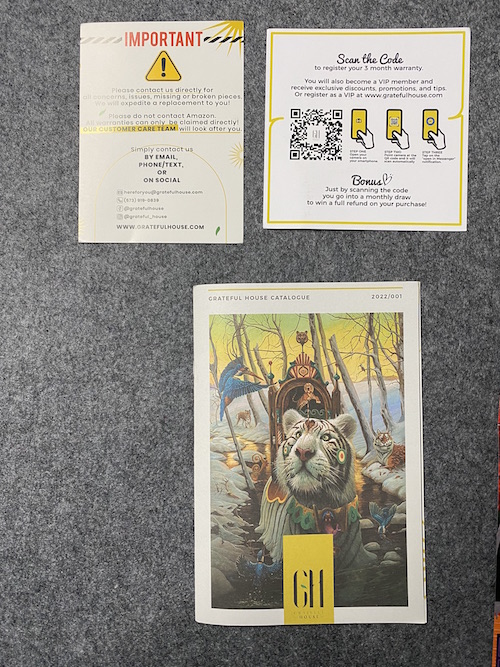 |
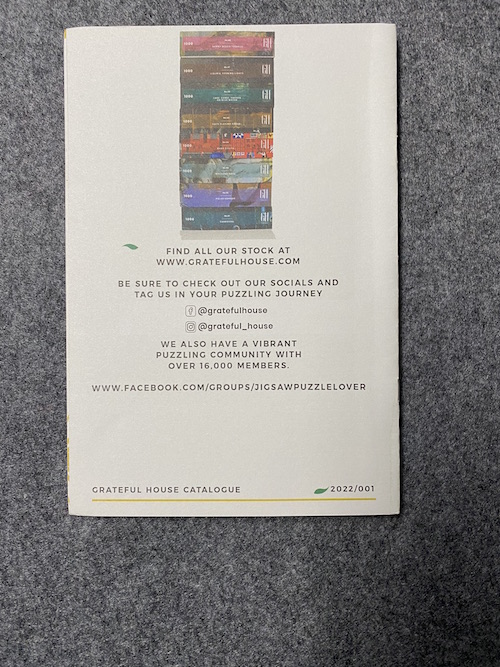 |
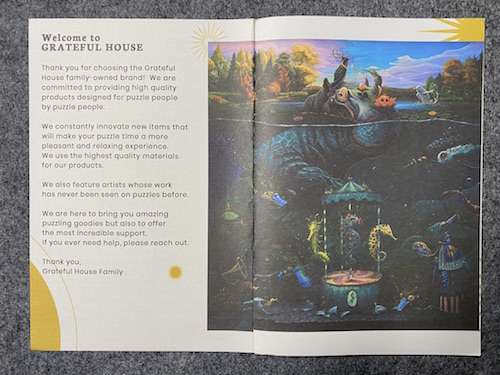 |
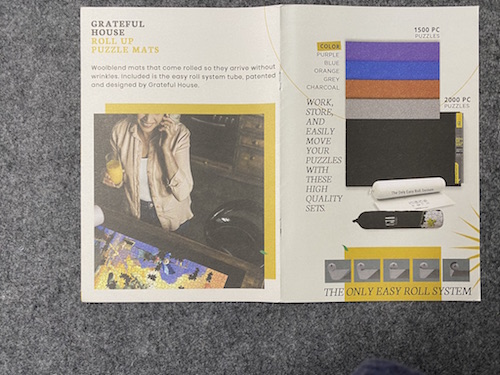 |
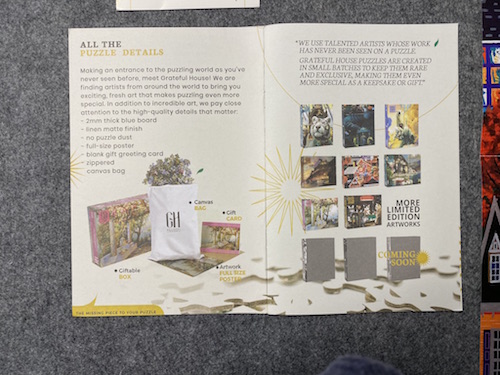 |
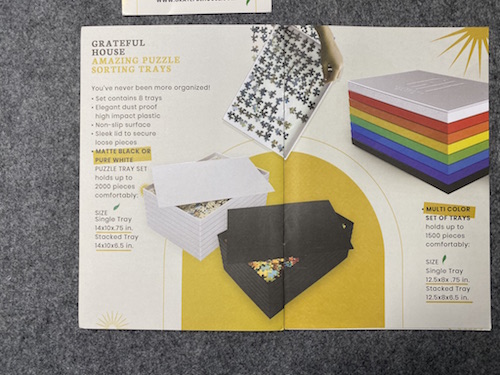 |
- Best Quality Jigsaw Puzzles
- 43 Best Jigsaw Puzzle Brands
- 5 Best Jigsaw Puzzle Lights
- 11 Best Jigsaw Puzzle Tables
- 23 Best Jigsaw Puzzle Mats
- 85 Best Shaped Jigsaw Puzzles
- 29 Disney Villainous Jigsaw Puzzles
- Best Jigsaw Puzzles Scoops
- Best Jigsaw Puzzle Glue
- No Glue Method for Puzzles
- 115 Cobble Hill Jigsaw Puzzles
- 33 JaCaRou Jigsaw Puzzles
- 9 WerkShoppe Jigsaw Puzzles
- 5 Grateful House Jigsaw Puzzles
- 95 Eurographics Jigsaw Puzzles
- 7 Hennessy Jigsaw Puzzles
- 11 Ceaco Jigsaw Puzzles
- 29 Cloudberries Jigsaw Puzzles
- 2 Wentworth Jigsaw Puzzles
- _______Advertisement_______
We have collected a massive list of jigsaw puzzles in numerous categories on our Amazon Store link. It's a quick way to browse most current puzzles and/or specific seasons, accessories and themes. Makes for a terrific one-stop jigsaw puzzle gift giving shopping centre. CLICK HERE
More Grateful House Products
About: Mastering the Art of Choosing the Right Jigsaw Puzzle
Tips to Avoid Buying Overwhelmingly Difficult Images
Jigsaw puzzles offer a delightful challenge, but there are times when the level of difficulty can be overwhelming. Whether you're a seasoned puzzler or a novice looking for an enjoyable experience, it's important to choose the right puzzle image that matches your skill level and personal preferences. In this article, we'll explore the world of difficult jigsaw puzzles and provide you with a list of tips to help you avoid buying images that might leave you feeling frustrated.
1. Know Your Skill Level
Understanding your own puzzle-solving skills is key when selecting a jigsaw puzzle. Be honest with yourself about your experience and comfort level. If you're a beginner, it's best to start with puzzles that have a lower piece count and simpler imagery. As you gain confidence and experience, you can gradually challenge yourself with more complex puzzles.
2. Consider the Piece Count
The number of puzzle pieces directly affects the difficulty level. Larger piece counts, such as 1,000 pieces or more, can be more time-consuming and mentally demanding. If you prefer a less challenging experience, opt for puzzles with smaller piece counts, such as 500 pieces or even fewer.
3. Analyze the Imagery
Before purchasing a puzzle, carefully examine the image. Complex and intricate designs, such as landscapes with numerous details or abstract patterns, tend to be more challenging. If you're looking for a less daunting puzzle, choose images with clearly defined sections, distinct colors, or simpler motifs.
4. Read Product Descriptions and Reviews
Take the time to read product descriptions and reviews. Puzzle manufacturers often provide information about the level of difficulty, which can help you make an informed decision. Additionally, reading reviews from other puzzlers can give you insights into the puzzle's complexity and whether it aligns with your preferences.
5. Look for Beginner-Friendly Collections
Many puzzle companies offer collections specifically designed for beginners. These collections often feature puzzles with larger pieces, simpler imagery, or even hints and guidance to assist you along the way. Exploring these beginner-friendly options can be a great way to ease into the world of jigsaw puzzles.
6. Seek Variety in Piece Shapes
Some puzzles feature unique piece shapes that can add an extra layer of difficulty. If you're looking for a more accessible experience, consider puzzles with standard grid-shaped pieces. However, if you enjoy a challenge, look for puzzles with irregular or whimsical piece shapes, as they can make the assembly process more complex and engaging.
7. Check for Puzzle-Specific Features
Certain puzzle manufacturers offer features to indicate the level of difficulty. For example, some puzzles may have a "difficulty rating" on the packaging or specify whether they are suitable for beginners, intermediate puzzlers, or advanced enthusiasts. These indicators can be valuable in making an informed decision.
8. Consider Collaborations with Artists
Many jigsaw puzzle companies collaborate with renowned artists, resulting in a wide range of puzzle images with varying levels of difficulty. Some artists may have a distinctive style that makes their puzzles more challenging, while others may focus on creating accessible and enjoyable designs. Research the artist's work and style to ensure it aligns with your preferences and skill level.
9. Seek Recommendations from Fellow Puzzlers
Engaging with the puzzle community, whether through online forums, social media groups, or local puzzle clubs, can provide valuable insights and recommendations. Experienced puzzlers can share their thoughts on specific puzzle images and brands, helping you make informed choices.
10. Trust Your Instincts
Ultimately, trust your instincts and choose puzzles that genuinely spark joy and interest for you. While it's important to consider the difficulty level, it's equally crucial to select images that you find visually appealing and personally satisfying. Enjoying the process of assembling a puzzle is just as important as the challenge itself.
By following these tips, you'll be better equipped to choose jigsaw puzzles that match your skill level and provide an enjoyable experience. Remember, puzzles should be a source of relaxation and fun, so don't be afraid to explore different options and challenge yourself while staying within your comfort zone. Happy puzzling!
(ChatGPT, personal communication, June 20, 2023)
- Home
- Tropical-Cookies-Puzzle
- Easter-Eggs-jigsaw-puzzle
- Halloween-Cookies-puzzle
- Barn-quilts-puzzle
